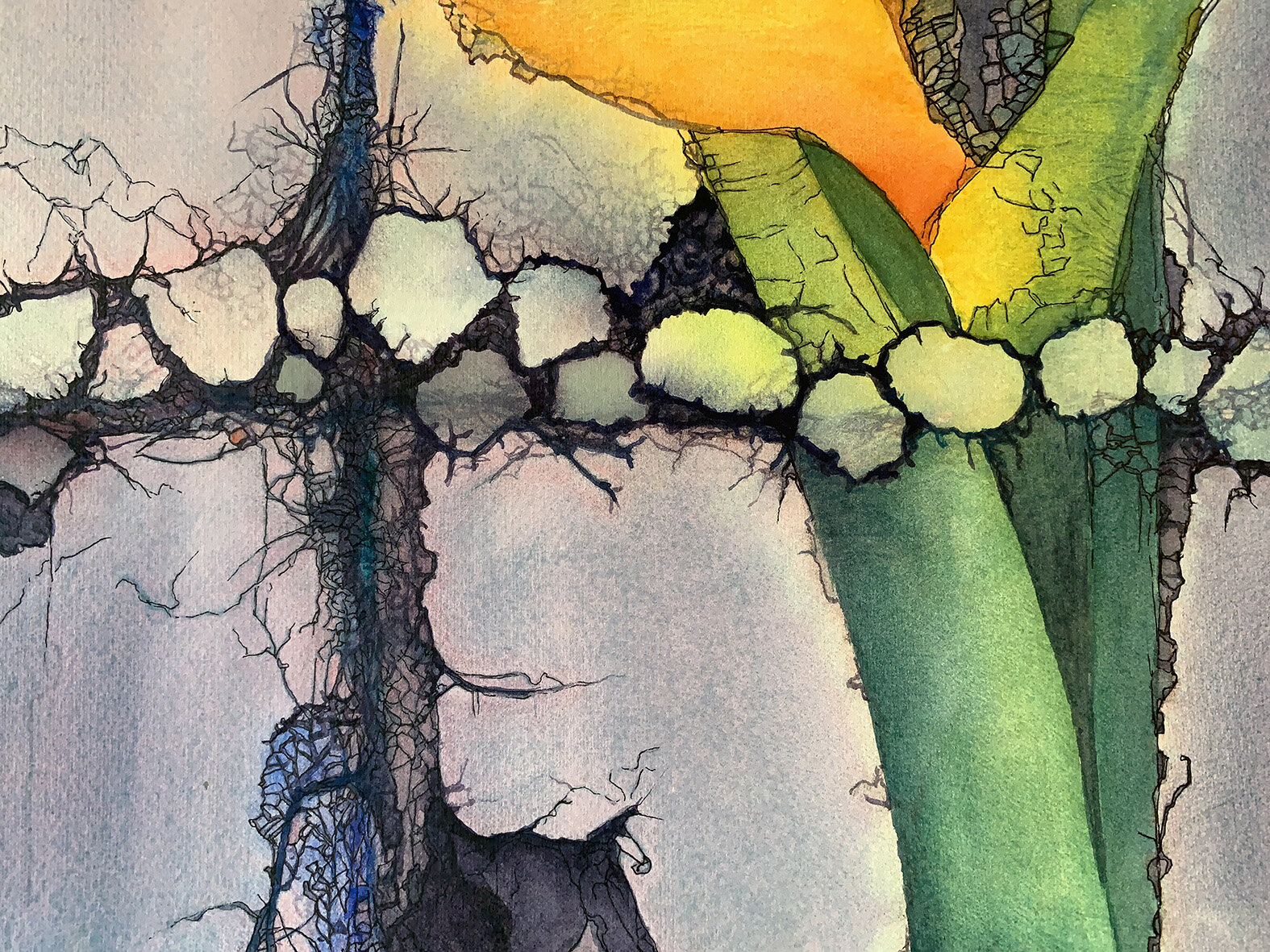My painting, “Eyes of Awareness” began in one of the Hide-N-Seek watercolor classes I teach.
The painting process is called “Hide-N-Seek” because I never know what the result will be. Each painting starts with an idea, sometimes a drawing, that’s hidden when texture is applied to wet paper.
This painting had no drawing.
I unravel 3-ply jute, a garden twine used to create texture. My full sheet of 300# Cold Press Arches watercolor paper is sopping wet. The texture hides a drawing or describes areas to be painted. It provides a path along which the paint moves.
As I laid the jute hap-hazardly on the paper, I explain, “this is a painting about procrastination. It’s about feeling anxious or resistant to doing something you must do, but don’t want to do.”
My palette glistens with bright, juicy, wet colors. Lifting a 1.5” brush filled with color, I continue, “Angst doesn’t feel good. You’re all tied up in self-made knots.”
Splat!
I swirled and threw great gobs of color, starting with yellow on much of the paper. Continuing around the color wheel, I flung oranges, reds, and pinks. The darker blues, turquoise, and purples are thrown on the bottom third of the paper — where procrastination lives — in the gut.
“Suddenly, in a burst of ‘I can’t take it anymore,’ you go ahead and do that thing that you don’t want to do.”
The cleaned brush is dipped back into the warm colors as more paint is released. Yellows, oranges, pinks even gold gouache sails through the air, arcing from the bottom melee of dark colors up toward the top of the paper in a spray of freedom.
At this point, the paper is loaded with rich, wet colors. It looks more like a question than an answer. What will this painting look like?
“Now,” I say to the somewhat shocked class, “we wait.”
The colors fade a bit as they dry. When it’s still damp, I gently lift the jute to see if the paint moves. If it is, I leave it alone.
Once the paint no longer moves, I remove the jute. Some of the paint lifts off with the jute.
When the paper is completely dry, I begin to find the painting.
I’ll stare at it until I know what to do.















